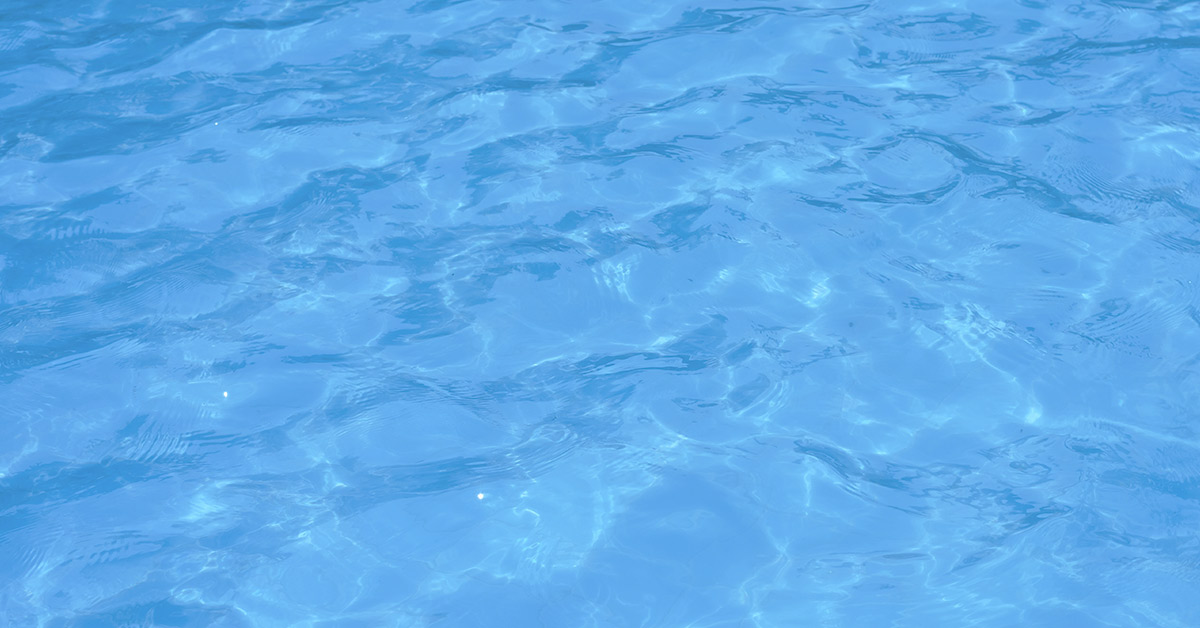Most parents are aware of child safety concerns when it comes to swimming pools. They ensure lifeguards are nearby and enroll their kids in swimming lessons. However, pool safety should begin in the changing room of the bathing suit store. And one nurse that runs the Australian Facebook group, CPR Kids, proved why. She shared a terrifying picture with a plea for parents to avoid blue swimwear for their kids.
In the picture, a boy in blue swims at the bottom of the pool. And he is almost invisible from the surface. [1]
Avoiding Blue Swimwear for Children
“Yes, there is a child there, it’s hard to believe we know,” reads the CPR Kids Facebook post.

“Following on from outpost recently on the importance of fluoro (sic) and bright colored swimwear for kids, one of the CPR Kids Educators was at a pool party with friends and noticed how cloudy the water had become after being used all day.
“She asked one of the children who was wearing a pale blue swimsuit to swim to the bottom.
“The result shocked her, as it did everyone in the CPR Kids team.”

The post went viral with hundreds of comments. People were shocked by the scary image and the implications behind it. [2]
CPR Kids added in a comment that the cloudiness was probably due to the sunscreen from the swimming kids, since the pool was usually clear. They strongly encourage parents to choose fluorescent swimwear for their children. Drowning can happen within minutes and it’s important that kids are visible at all times. Avoiding blue swimwear can make a key difference.
Swimming Pool Safety for Kids
Many people assume that drowning is easily preventable, but it is the leading cause of death in children ages one to four. And it is the second leading cause of death in children ages five to fourteen, according to the CDC. About 700 kids die every year from drowning, and most of the kids in the ages one to four category die in home swimming pools. [3]
Going for a swim this weekend? Make sure you dress the kids in bright and colourful swimwear so that they are easier to see at all times. Remember; drowning is silent, and every second counts. #fluorosoyouknow
Posted by CPR Kids on Friday, January 29, 2021
Kids who survive a drowning incident often require hospitalization for their injuries. In some cases, the children are left with severe brain damage. Depending on the child’s age, drowning could occur in bathtubs, toilets, buckets, pools, hot tubs, spas, and natural bodies of water.
Here are three vital safety tips for parents:
Tip 1: Close Supervision
Even when there is a lifeguard nearby, it’s imperative to keep a close eye on your children. The lifeguard could not watch everyone at once, and drowning is often a silent and sudden act with no screaming or splashing. More often than not, a child just disappears, and by the time the parent realizes he’s underwater, it’s too late.
Children can drown in less than two inches of water, even in sinks, fountains, or inflatable pools. Even children who are strong swimmers are at risk. They could slip, injure themselves, or fall unconscious while in the water. This is why the nurse advocates for parents to avoid blue swimwear. Visibility could save a child’s life.
Little kids and weak swimmers should be within arm’s reach at all times. [4]
Tip 2: Fence the Pool
If you own your own swimming pool, have a secure barrier around it at all times.
“Having an unfenced pool is like having an uncaged lion in your backyard,” says Morgan Miller, whose daughter, Emmy, died at 19 months in a friend’s pool. “To a child, that big furry animal could look like something fun to play with. It’s appealing and tempting. But we as adults know that a lion is deadly and can kill your child.”
Tip 3: Make Swimming Lessons a Priority
According to the American Academy of Pediatrics (AAP), swimming lessons could be beneficial for kids aged one to four. Lessons could be especially vital if they live in a home with a private pool. Still, the age isn’t set in stone.“The right time to start depends on an individual child’s emotional and physical readiness,” says Ben Hoffman, M.D., who is chair of the AAP Council on Injury, Violence, and Poison Prevention.
“The goal with very young children is to make them comfortable in the water so that when they are developmentally ready, they can learn and use skills that could be lifesaving,” says Stephen Langendorfer, Ph.D., professor emeritus of kinesiology at Bowling Green State University, and on the scientific advisory council for the American Red Cross. [5]
Keep Reading: Dad ‘shamed’ for showering naked with daughter, 6, after swim at local pool
Sources:
- “Frightening reminder to parents why they should AVOID blue swimwear for kids.” Families Online. February 4, 2021
- “Why children should never wear blue swimwear.” Wales Online. William Walker, Neil Shaw.February 3, 2021
- “Home and Recreational Safety: Water-Related Injuries.” Centers for Disease Control and Prevention. October 7, 2020
- “Why Is Water Safety Important?” Water Safety. Sarah K. Romero, MD. May 2019
- “Home Swimming Pool Safety Tips All Parents Should Know.” Parents.Peg Rosen and Pamela Kramer. February 13, 2019

